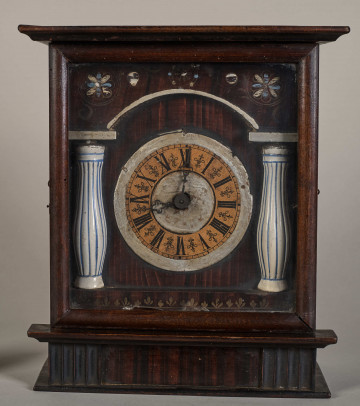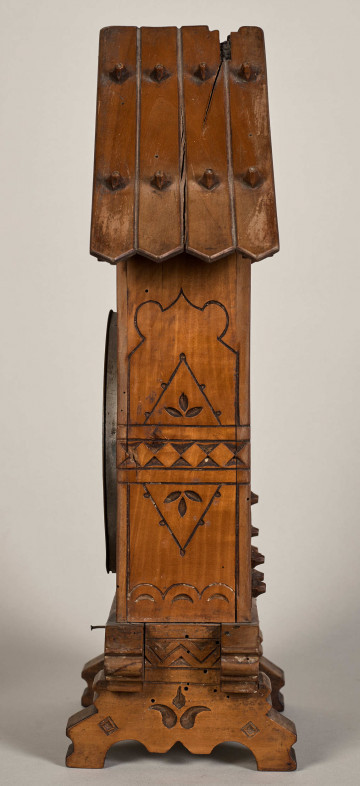
Clock
19th / 20th century
Castle Museum in Łańcut
Part of the collection: History of the city and the region
The guild seal was used to authenticate all of its documents. Each guild kept records of masters, journeymen and apprentices, organised examinations, issued certificates of graduation and master's diplomas, as well as ran other clerical activities. Seals, like guilds – symbolic objects used for convening meetings – had the attributes of particular profession next to the name of the guild or association. In the case of the seal of the Łańcut Blacksmiths' Guild, dating back to the 20th century, one can see a hammer and a horseshoe cut out in a piece of rubber. The blacksmith's guild itself had a long-running history in Łańcut, dating back to the Middle Ages, when it was one of the key guilds due to the Hungarian mining law, which was in force in the city. In 1350, King Casimir the Great issued a privilege, granting the landowners the right to run mining operations on their own land. As a result, the forests north of Łańcut were used as a source of bog iron ore, which was melted in furnaces and forges, creating raw material suitable for use by blacksmiths and other craftsmen. Joanna Kluz
Other names
unknown
Author / creator
Dimensions
height: 6.6 cm
Object type
History of the city and the region
Technique
embossing, cutting
Material
wood, natural rubber
Creation time / dating
Creation / finding place
Owner
Castle Museum in Łańcut
Identification number
Location / status

19th / 20th century
Castle Museum in Łańcut

20th century
Castle Museum in Łańcut

19th (?) century
Castle Museum in Łańcut
DISCOVER this TOPIC
National Museum in Szczecin
DISCOVER this PATH
Educational path